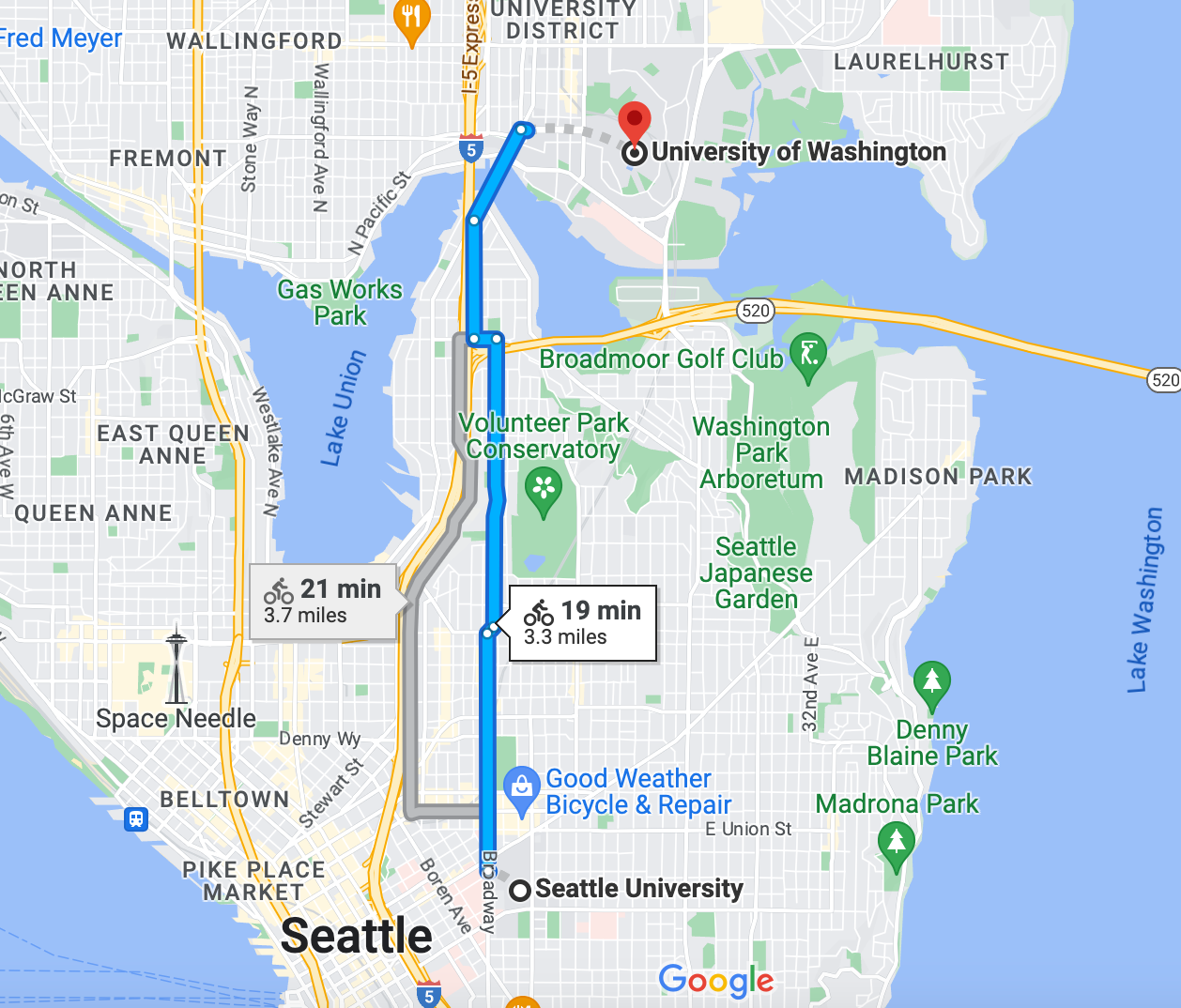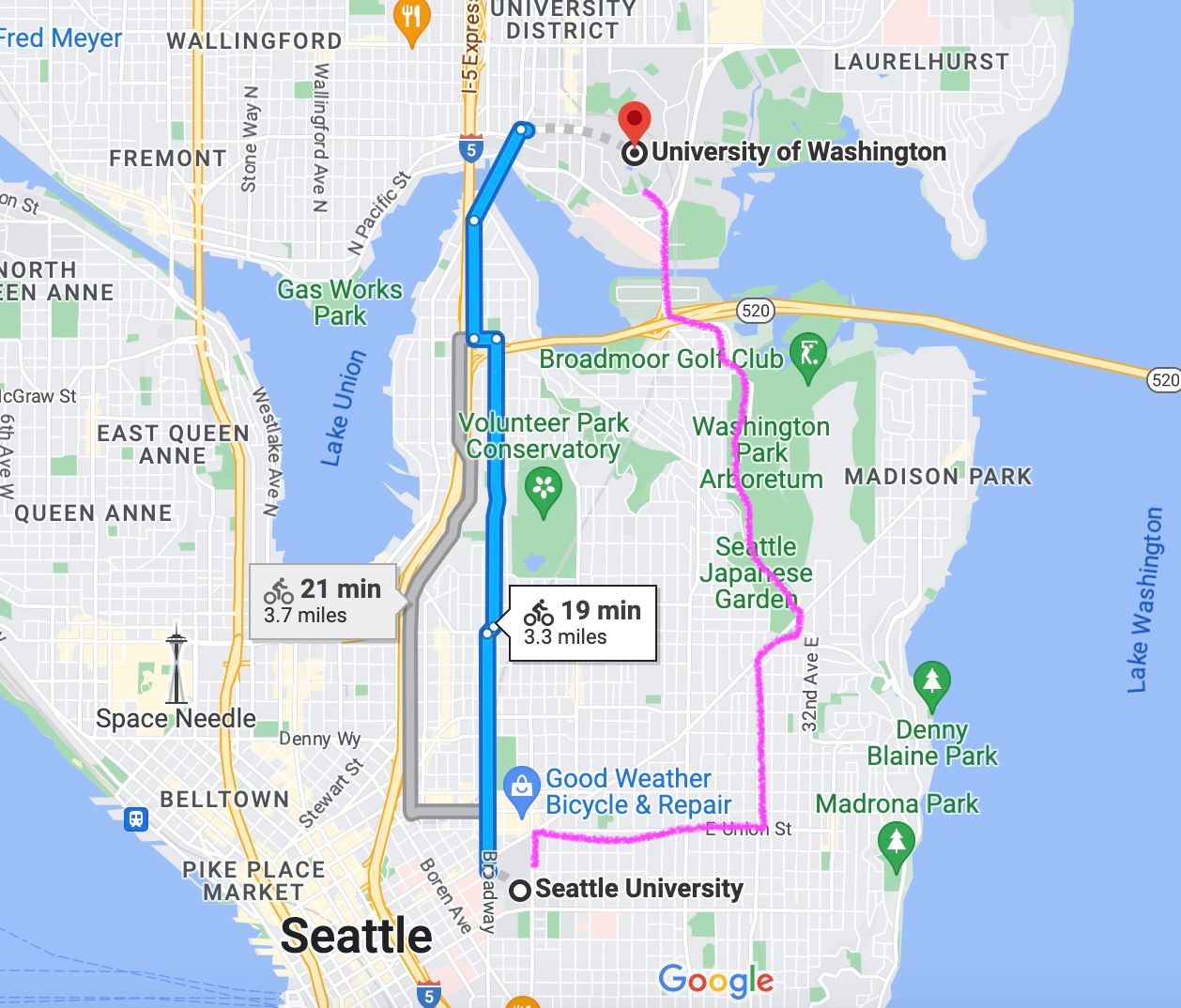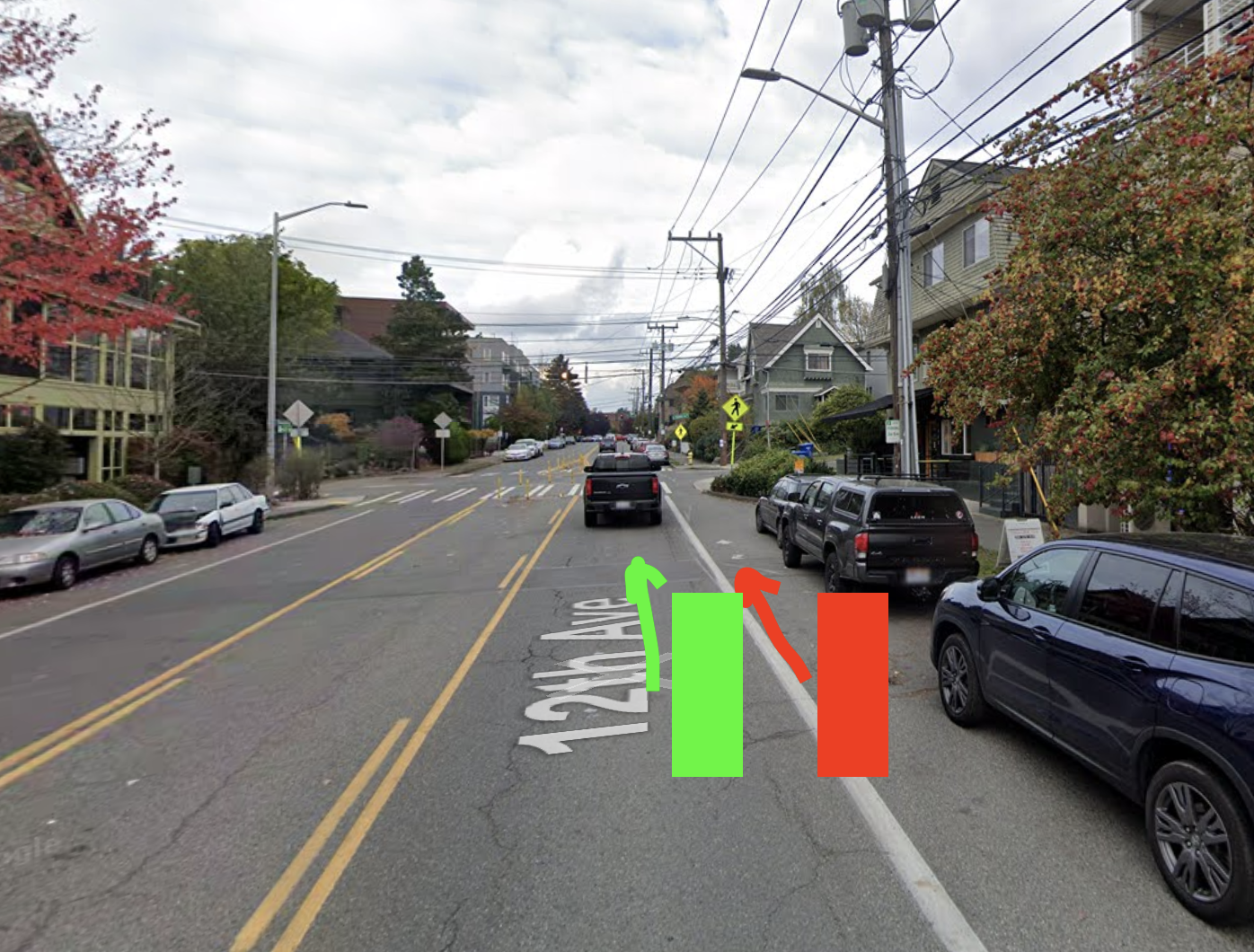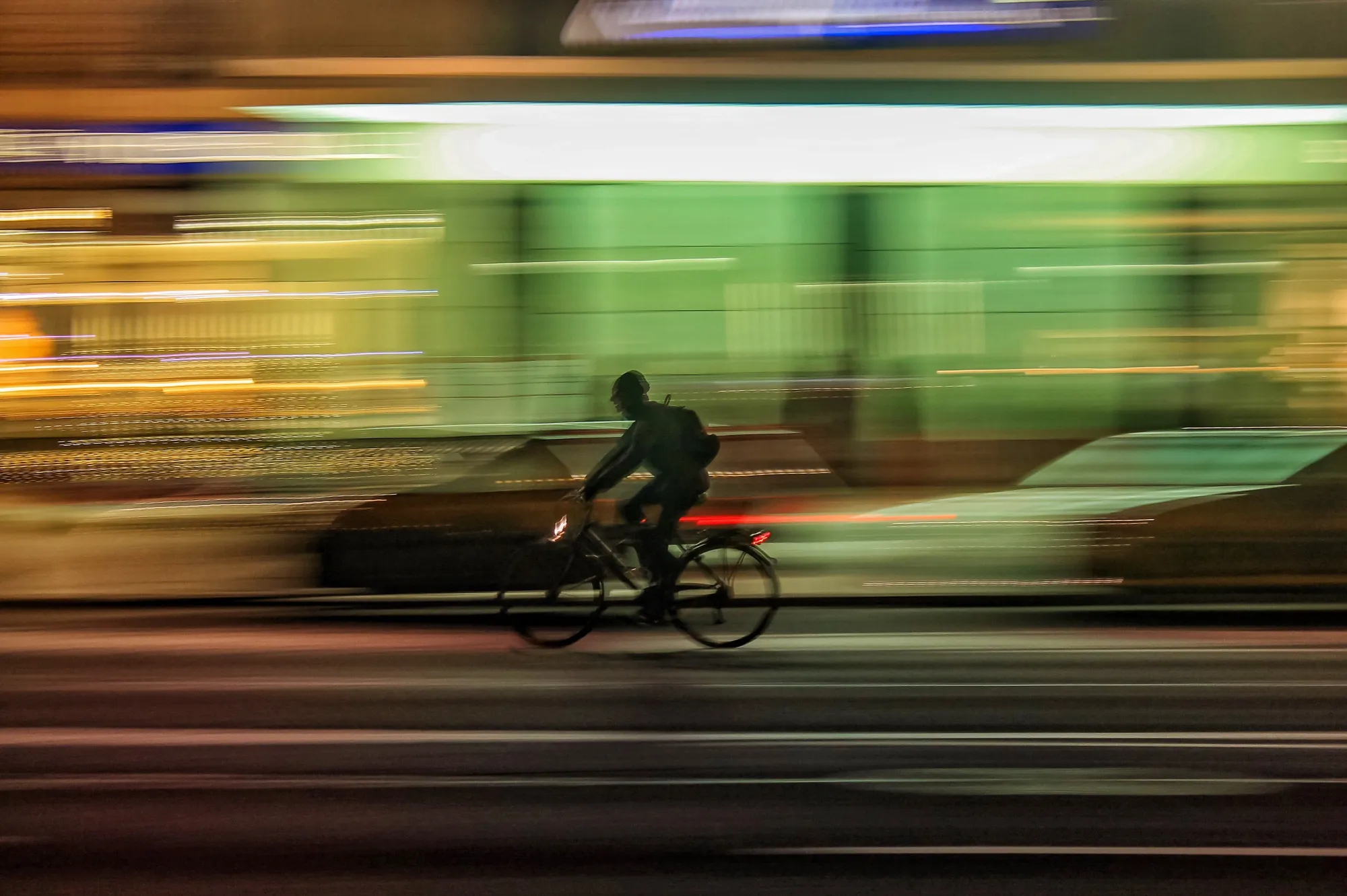Making biking a regular part of my life has improved my mental health, physical health, and it's helped me get to know the city better. I'm always trying to help friends get into biking so they can experience the benefits I've experienced. But many people have a major hangup that I don't have a good response for: fear of cars.
This is real. The unfortunate reality is that in most U.S. cities, a bike ride to any place we actually want to go to will involve an interaction with a several-thousand-pound hunk of metal, driven by someone who may also be texting their partner while racing to a meeting. So what's a bike to do?
To start, see if your city has a bike infrastructure map. Here are a few such maps for cities across the U.S.:
- Minneapolis, MN
- San Francisco, CA
- Oakland, CA
- Seattle, WA
- Philadelphia, PA
- Washington D.C.
- New York City, NY
- Brooklyn, NY
- Atlanta, GA
- Austin, TX
The Google Maps bike icon can also generate a good route to start with. But then, spend some time on Google Street View actually navigating it: can you substitute residential streets or side streets anywhere? Are there parks you can cut through? Can you take a 2-lane road instead of a 4- or 6-lane road? Optimize for encountering the fewest cars over getting there the fastest way. Here's an example of a route where Google Maps suggests the fastest way, but not the best way for a new rider:

I'd recommend this route instead:

The next big piece of guidance is to bike predictably and defensively. A few examples of this are:
- Use hand signals when you turn!
- Yes, cars are supposed to slow down at yellow lights and stop at red ones, but it's safer for you if you assume they won't.
- Assume they don't see you if you're next to them in a right hand lane, and that they may turn into you if you're in their turning path.
- Don't assume that because one car waves you on to cross in front of them or merge into traffic, other cars in traffic are on board with the plan.
Last but not least: take up more space, not less. It can be tempting, when there's no bike lane and you sense cars backing up behind you, to scoot as far over to the edge of the lane as possible and encourage cars to squeeze past you in the same lane. Don't do this! Take up more space and make them pass you only when there's enough room for them to move over into the neighboring lane.

This is some of the guidance I've shared with friends to help them navigate biking around cars in the city. I hope it helps, and I'd love to hear what works best for you too. Leave a comment or email us at [email protected].

Member discussion